Ecotourism started to become popular around 2010. With much of the world becoming aware of the dangers of habitat loss and the extinction of many species of natural organisms, the focus shifted from visiting vacation sites and potentially leaving a mess to visiting stunning natural areas and leaving little to no footprint.
Here are our top eight ecotourism destination picks:
- Hawaii
- Iceland
- Palao, in Micronesia
- The Galapagos Islands in Ecuador
- Gorilla interactions in Rwanda
- The natural beauty of Colombia
- Morocco and the Sahara Desert
- The nature reserves of South Africa
These are some of the most glorious ecotourism destinations to consider as you plan your next trip.
1. Hawaii
Hawaii is a popular tourist destination known for its distant, white beaches, great surfing spots, and fantastic wildlife.
Each island has a unique and delicate ecosystem. Because of this, numerous endangered and threatened plants and animals need protection.
Residents respect their homeland and go to great lengths to protect it.
There are strict preservation laws for hiking, swimming, and diving, and when you experience life in this natural wonderland, you will likely soon take on the mindset of the people who call it home.
A central philosophy of Hawaiian people is “mālama ‘āina .”
This phrase means to care for the land. Hawaiian people offer tourists numerous ecotourism activities and destinations as part of their efforts to care for the land.
Let us look at what Kaua’i, Hawaii, has to offer regarding ecotourism.
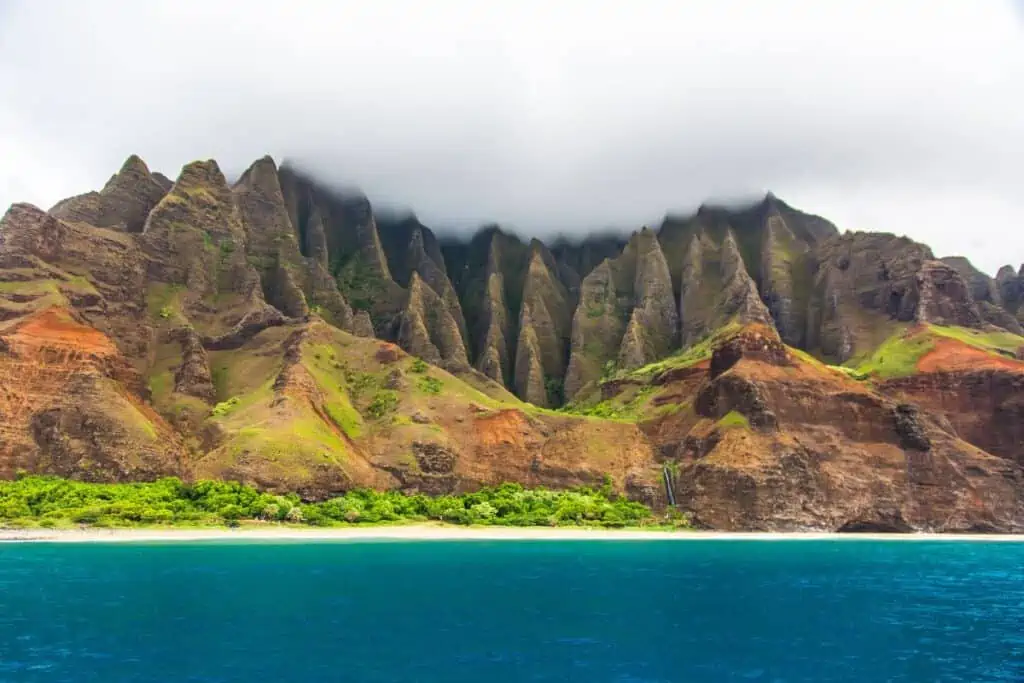
Travel To Kaua’i
Kaua’i is a popular destination for divers and snorkellers, from beginners to advanced. There are several pristine beaches; many can only be reached by hiking through the dense vegetation.
In addition to hiking, snorkeling, and diving, Kaua’i offers a range of informative tours that give you a deeper understanding of how the island’s locals work the land and the unique flora and fauna.
To get the best from your trip to Kaua’i, visit between December and May.
This is when you can be treated to whale spotting on tour and watch the endangered Hawaiian monk seals enjoying the water on Po’ipū Beach.
Farm tours give insight into how important natural products are cultivated. Book a tour in the Hanalei taro fields, and take a trip to the Kaua’i coffee plantation in the South.
The most extensive botanical gardens in Hawaii can be found on Kaua’i. The National Tropical Botanical Garden boasts three different sites, including:
- Allerton Garden, west of Kōloa
- McBryde Garden, west of Kōloa
- Limahuli Garden, on the North Shore
2. Iceland
When you think of Iceland, images of volcanos, green pastures, cold weather, and shaggy ponies likely spring to mind.
Were you aware that Iceland is one of the top ecotourism destinations in the world and that you can enjoy diving and snorkeling in this stunning destination?
With ecotourism becoming more popular the world over, Iceland has put into place initiatives to ensure the sustainability of its ecotourism going forward.
The Icelandic Environment Agency and the Icelandic Sustainable Tourism fund work together to establish and maintain guidelines for eco-friendly travel in the country.
Let us have a look at a little of what Iceland has to offer the ecotourist.
Visit A National Park In Iceland
Iceland boasts three major national parks:
- Thingvellir National Park
- Vatnajӧkull National Park
- Skaftafell National Park
Thingvellir National Park is the site of Iceland’s first parliament and boasts the Silfra Fissure. This rift valley is where you can view Iceland from the water as you snorkel or dive.

Vatnajӧkull National Park, the largest in Iceland, has the largest glacier in Europe.
Take a hike in this national park, ride a bike, and camp to enjoy the splendor of natural Iceland firsthand.
Skaftafell National Park can be found within Vatnajӧkull, mentioned above. This rugged land has been hailed as one of the most stunning areas of Iceland.
Enjoy hiking, biking, and camping to get the most from your visit to this national park.
Hiking is a great way to see Iceland up close and is a green travel alternative. Be sure to leave no mess and leave nature as you found it.
Bathe In The Blue Lagoon
While this destination may not be completely natural, it does offer water heated by geothermal means.
Take a leisurely bath in the lagoon, surrounded by out-of-this-world views created by the volcanos of Iceland.
The nearby spa offers steam rooms and saunas, a top-notch restaurant, and a hotel.
Whale Watching
There are twenty-three species of whales in the waters of Iceland, and whale watching is a popular eco activity for tourists to the area.
It is best to go on a whale-watching tour during the summer months. During this time, the water is calm, allowing you to see the whales as they breach the surface.
The weather is also milder and quieter. This means that tours will likely not be canceled due to inclement weather.
If you plan a winter trip to Iceland, whale watching can still be an option. There will be fewer other tourists, and the choppy waters will not be an issue if your stomach is strong.
Although many whales move to the equator for breeding, some remain to feed in the waters of Iceland, even during the winter months.
Explore The Golden Circle
Iceland’s Golden Circle is an approximately 186-mile wonderland. Since it is a remote destination, renting a car and exploring it at leisure is best.
If you are concerned about the carbon impact you may leave, consider renting an electric car from a reputable company.
Attractions to see while exploring the Golden Circle include:
- Waterfalls
- Spas
- Volcano craters
- Geysir Geothermal area
- Thingvellir National Park
Take care when driving in Iceland since the driving conditions are somewhat different from what you are likely accustomed to.
3. Palau, In Micronesia
Palau is well known as a fantastic diving spot. The island boasts miles of gorgeous coral reefs and has a reward program for those wanting to do even more for the environment.
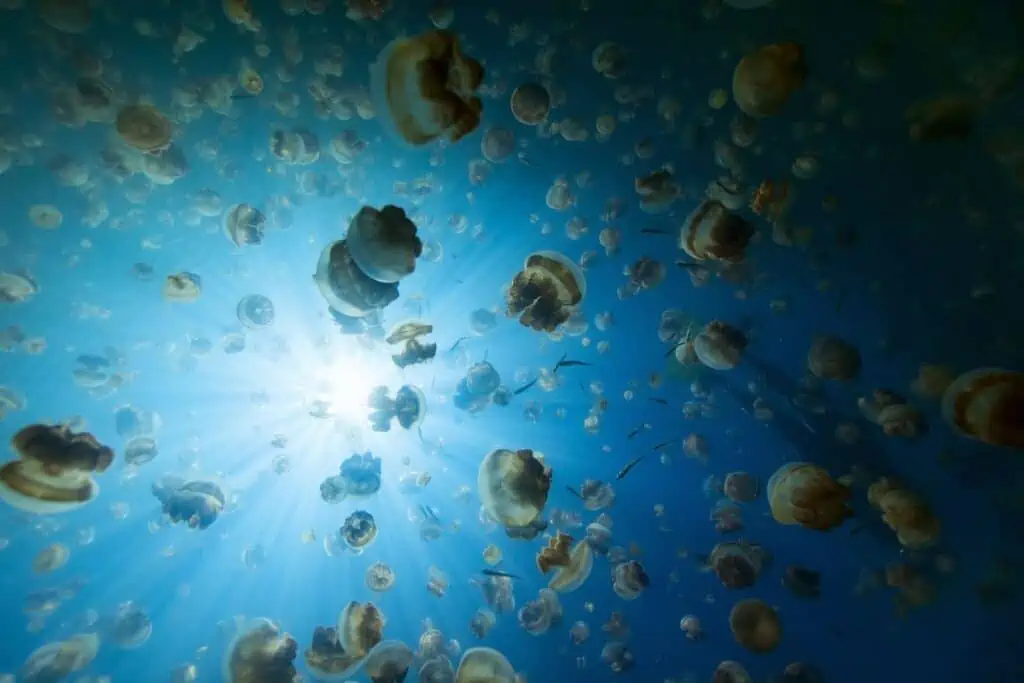
Palau is the beautiful home to a large number of endangered fish. Without the unique habitat that this island provides, they would be extinct.
The Palau Conservation Society and the Palau Project keep a close eye on tourism and development in the area.
Since being featured on season 10 of the TV show “Survivor,” the island has become a popular tourist destination, putting the environment and biodiversity at risk.
With environmentalists’ keen eyes directed at the island, the people of Palau are working together to ensure their island remains sustainable for many years.
Let us look at how you can enjoy ecotourism in Palau.
Eco-Friendly Activities In Palau
- Spot thousands of jellyfish at Jellyfish Lake.
- Snorkel and bathe in the healing mud at Milky Way.
- Go island gazing.
- Enjoy waterfalls.
- Enjoy the pristine and numerous beaches.
- Visit cultural museums.
- Visit the aquarium.
- View stone monoliths, which are ancient ruins.
- Download the Ol’au Palau app. This app helps you track your environmental impact during your stay and make choices that are good for conservation. As you check eco-friendly items off the list, you unlock rewards like diving spots and opportunities to view wildlife.
- Organize a family stay with a local family to get a personal look at the rich culture of the land.
4. The Galapagos Islands, In Ecuador
The Galapagos Islands were integral in the inspiration for Charles Darwin’s theory of evolution.
It has been a popular ecotourism destination since the 1960s, but recent surges in tourist numbers have caused environmentalists a great deal of alarm.
The islands are home to thousands of unique species of flora and fauna, and their integrity should be respected and preserved at all costs.
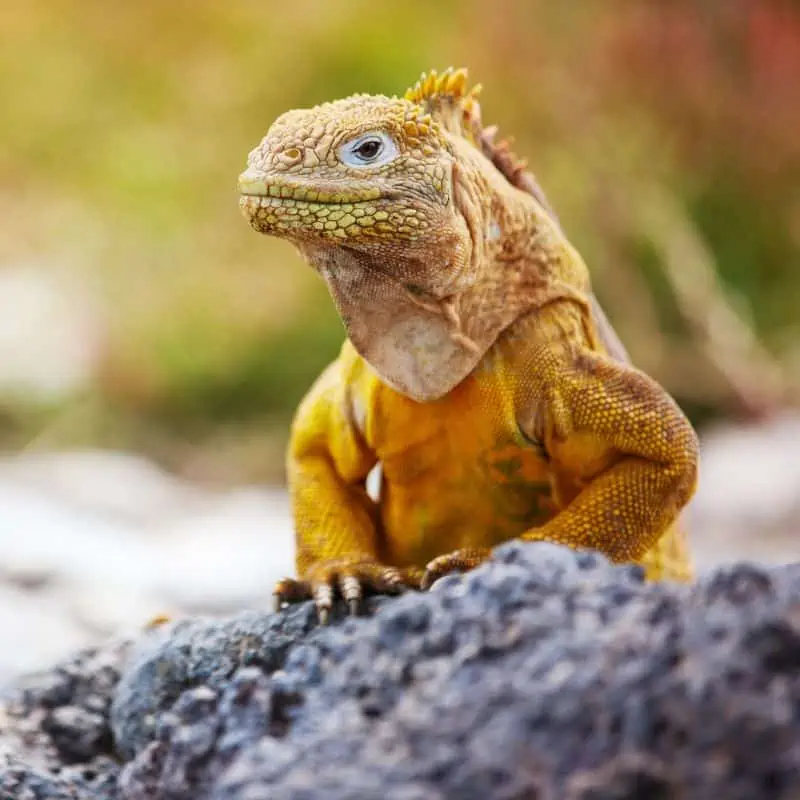
The Galapagos National Park has been at the helm of the push for responsible ecotourism in recent years. They aim to educate tourists about the natural world they are visiting, as well as the rich cultural heritage of the locals.
Let us look at some eco-friendly activities you can enjoy in the Galapagos Islands:
- Surfing: book a trip with a local company or hire a board.
- Diving: book a guided diving trip with a local company across the island.
- Snorkeling: book a trip and be sure to follow the strict guidelines concerning wildlife
- Hiking: choose to hike with a tour guide or alone. Please stay within the demarcated trails.
- Mountain biking: mountain biking is a beautiful way to view the island by land. Rent a bike from a reputable local company.
- Kayaking: rent a kayak and take an adventurous, close-up trip on a body of water.
- Volunteering: there is no better way to get to know the land and people than to volunteer at a research center.
5. Gorilla Interactions In Rwanda
The Dian Fossey Gorilla Fund was established back in 1967 with the sole purpose of helping people and saving gorillas. Tourists are treated to one of five mountain hikes to reach their final destination.
Families of gorillas are dotted throughout the mountainous area, but you are unlikely to see any until your expert tracker has located the group you are assigned to visit.
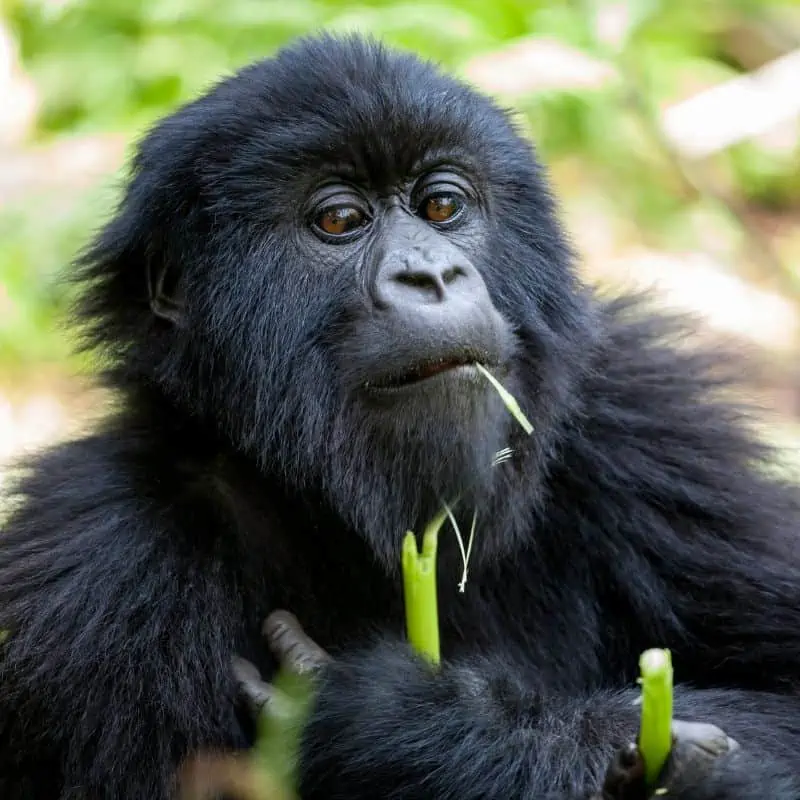
You will be struck by the intense beauty around you as you go along the trail.
Trackers locate the gorillas by gauging where they may have moved from the previous day’s spot. They use tracking techniques to guide you toward the group.
It is intriguing to watch them at work, and while you move along, you have the opportunity to take in all the natural wonder around you.
When you participate in gorilla interactions in Rwanda, you should be prepared to follow the instructions that will be explained to you.
The gorillas are habituated to having tourists around them, but one wrong move could ruin the experience for all.
When visiting the gorillas in Rwanda, it is imperative to remember that they are endangered species. There are only 880 mountain gorillas left.
Be respectful by keeping a distance of around 23 feet. This signifies that you are not a threat and keeps any illnesses passing from you to the gorillas.
Remember to cough into your arm if you need to, and avoid spitting or eating in the forest.
6. The Natural Beauty Of Colombia
Colombia is the setting for the popular animated film “Encanto.”
The stunning natural setting and rich cultural heritage lend much to the magical storyline of the film, but did you know that Colombia is also an excellent and rich ecotourism destination?
Colombia has rich biodiversity partly because of the vast range of environments.
Colombia is the place to go for intensely unique and wonderous plants and animals, from deserts and mountains to forests, beaches, and plains.
According to Colombia Tourism, let us look at the five most popular destinations to enjoy in an eco-friendly trip to this stunning destination.
Chingaza National Park

Take a guided hike through the unique ecosystems of this national park, considered one of the best ecotourism destinations in the country.
Close to the capital of Bogotá, the park is home to bears, jaguars, pumas, monkeys, toucans, and the Andean condor.
The altitudes of the park range from 2,600 feet to 13,123 feet. Quite a difference.
Pay close attention, and you will have the opportunity to marvel at the “frailejon” plants that occupy parts of this national park.
Utría National Park
If you are interested in marine wildlife, Utría National Park will not disappoint. The park has a lagoon that serves as a nursery for baby whales.
Humpback whales travel miles to birth in these shallow waters, and you will be treated to watching the miracle of life playing before your eyes.
Visitors coming for this phenomenon should stay at Bahia Solano, where sea turtles lay their eggs. Later, baby turtles can be observed making their pilgrimage to the sea.
El Cocuy National park
In stark contrast to the marine viewing at Utría, visiting El Cocuy National Park will leave you speechless for a different reason. This park is popular with hikers.
Among the animals you can see in this national park are:
- Spectacled bears
- Hummingbirds
- Torrent ducks
- The Andean condor
- The Andean cock-of-the-rock
The snow-topped peaks make for stunning sightseeing alongside lakes and ice fields.
Malpelo Flora and Fauna Sanctuary
This sanctuary is a UNESCO World Heritage Site, and for a good reason. Below the water, you will find a diverse range of wildlife, including:
- Hammerhead sharks
- Silky sharks
- Smalltooth sand tigers
Book a diving trip and enjoy all this unique site has to offer.
Serranía de la Macarena National Park
When you visit Colombia, pay attention to the talk about the Guayabero River. This river, situated within the Serranía de la Macarena National Park, is considered one of the most beautiful in the world.
Imbued with a rainbow of color, the river changes and shifts as the rare river weed below the surface alters its state while the water flows.
Hike through the surrounding land and spot jaguars, cougars, deer, monkeys, and anteaters on your way to and from the river.
7. Morocco And The Sahara Desert
Morocco is home to a rich ethnic culture in the North of Africa. In the cities, the old ways have been replaced by markets and nightlife.
In more rural areas, however, one can find old-fashioned people and enjoy ecotourism in the Sahara Desert.
When visiting Morocco, hire local tour guides rather than international companies. In this way, you give back to the community.
You will be astounded at the country’s biodiversity when investigating ecotourism activity ideas in Morocco.
Visit various stunning waterfalls, take in the sights of natural valleys, or visit rural villages in the mountains.
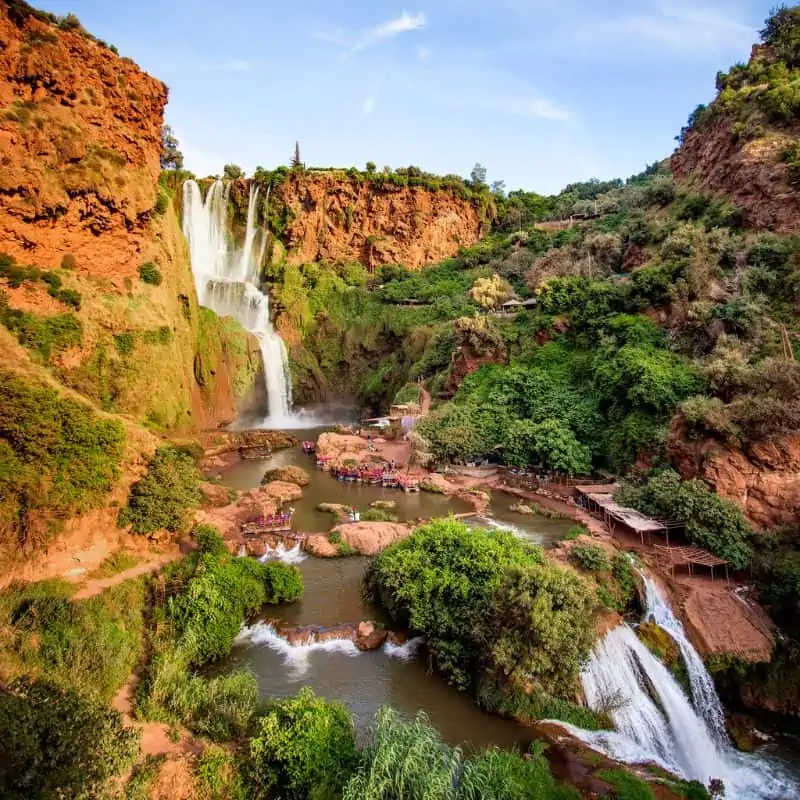
Marvel at canyons and forests and learn about step farming and building in the rural hills.
No trip to Morocco is complete without a trip in the desert. Ride a camel and opt to camp for the night under the stars.
Morocco comes alive through its people, but its natural environment makes it unique and beautiful. See if you can spot a few goats as they climb the trees to enjoy the sweetest leaves.
8. The Nature Reserves Of South Africa
Also in Africa, South Africa is on the opposite end of the continent to Morocco. South Africa is well known for its somewhat volatile history, including the apartheid era.
One aspect of the country that is breathtaking and well worth a visit is the nature reserves that occupy much of the land.
Nature reserves are protected lands that focus on preservation. Most nature reserves have stylish and comfortable hotels, lodges, glamping facilities, and visitor self-catering chalets.
If you select to stay in a nature reserve with predatory animals, follow safety guidelines to keep yourself and your loved ones safe.
Nature reserves offer the ultimate safari experience. While in a South African nature reserve, you might spot one or more of the following animals:
- Lion
- Cheetah
- Leopard
- Hyena
- Springbok
- Various species of birds
- Zebra
- Giraffe
- Elephant
- Warthog
- And many more animals
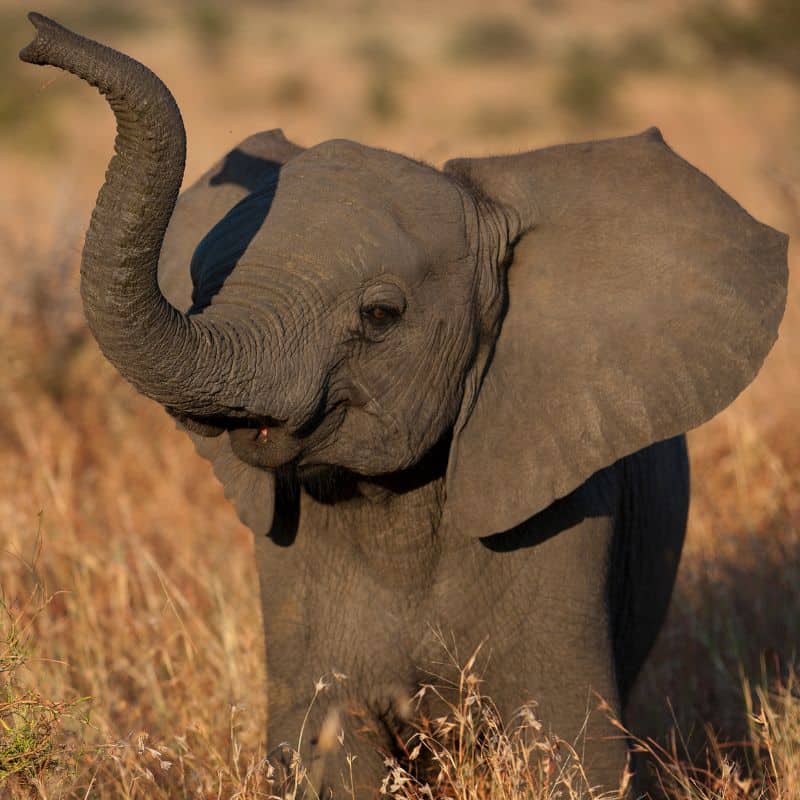
The plant species in South Africa are as diverse as the animals. Depending on the nature reserve, you might find succulents, forest plants, or savannah vegetation.
A few famous nature reserves in South Africa include:
- The Kruger National Park
- Bonamanzi Game Reserve
- Giants Castle Nature Reserve
- Imfolozi Game Reserve
- Agulhas National Park
- Bontebok National Park
- Augrabies Falls National Park
Final Thoughts on Ecotourism Destinations
If you are looking for new and unique ecotourism destinations, consider Hawaii, Iceland, Palao, The Galapagos Islands in Ecuador, Gorilla interactions in Rwanda, the natural beauty of Colombia, Morocco, and the Sahara Desert, or the nature reserves of South Africa.
These destinations offer amazing opportunities to see some of the world’s most beautiful and iconic landscapes and learn about and interact with local wildlife while supporting local conservation and preservation efforts.
